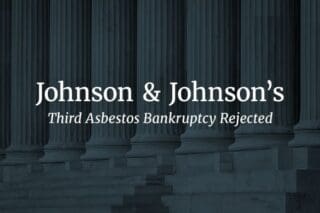
911 dispatchers at the Florida Palm Beach Sheriff’s Office (PBSO) may be victims of workplace asbestos exposure. Nearly 100 emergency dispatchers and radio operators have worked at PBSO headquarters during the building’s two-year renovation.
The building contains asbestos. When disturbed, inhaled asbestos fibers can cause diseases, such as mesothelioma and lung cancer. For their safety, the in-office staff and police union are demanding relocation.
Expert Expresses Concern Over Contaminated Headquarters
In July 2020, licensed mold expert Gary Rosen inspected the PBSO building. Rosen’s report found the building contained black mold and asbestos. He stated the levels of dangerous materials were too high for successful removal.
“Based on the July report’s findings, the building is not fixable. It is my recommendation that remediation of this facility should cease. [The building] is impossible to fix… [it] needs to be torn down and rebuilt.”
– Gary Rosen, Ph.D., The Palm Beach Post
PBSO headquarters employees are concerned remediation or removal of the asbestos and mold will not fully address health risks.
Employees also worry about their presence in the building during renovations.
Before construction began in 2021, the county relocated 315 employees, the sheriff and his executive staff. Around 100 dispatchers are still working in the building during the renovation project.
Staff Worry About Impacts of Asbestos Exposure
Despite safety assurances from county officials, on-site staff are fearful of asbestos exposure. Signs have been posted throughout the contaminated building warning employees and workers about asbestos dangers. Construction workers are wearing HAZMAT suits during renovations, but dispatchers have been given no protective gear. Many only have the protection of COVID-19 masks.
Officials say the county is following proper asbestos abatement procedures. However, many people have reported symptoms such as itching, coughing and nosebleeds. Some plan to file workers’ compensation claims soon. Because asbestos-related diseases can take decades to present, employees worry about long-term health effects of exposure.
Legacy Asbestos Continues to Raise Concerns
Asbestos is a mineral that was used for decades in a wide variety of products. Because of known health risks, the United States restricted its use in the 1970s.
Asbestos is naturally durable, fire-resistant and affordable. Because of its desirable qualities, asbestos was a popular material in many industries, such as the construction industry. There are state and federal laws to regulate asbestos use. However, old buildings may still contain asbestos in materials, such as tiles, insulation and cement.
Construction and demolition may disturb asbestos. This can lead to construction workers inhaling the harmful fibers. Those exposed to asbestos are at risk of several types of cancer.
To limit potential exposure, there are regulations for asbestos inspection, abatement and demolishment. There is no known safe level of asbestos exposure. Anyone nearby may be at risk of exposure if precautions are not taken.
PBSO Renovation Highlights Asbestos Risks in Old Buildings
With support from the police union and its leader, PBSO staff are speaking out. They are demanding protection against potential mold and asbestos exposure in the workplace. After protests and public complaints, relocation plans are underway. Due to logistics, county officials say it may take at least four to six weeks to relocate everyone.
There have been similar asbestos issues in other police departments in the U.S. and abroad. Police officers in Birmingham, Alabama, and Washington, DC, were exposed to asbestos in police headquarters. In the United Kingdom, three decades of officers trained in certain buildings face asbestos risks. In some cities, police department employees filed for workers’ compensation.
Despite federal and state laws, there are still high-risk areas for asbestos exposure. Many public and residential buildings may still contain asbestos materials. This puts workers and surrounding communities at risk of exposure.




